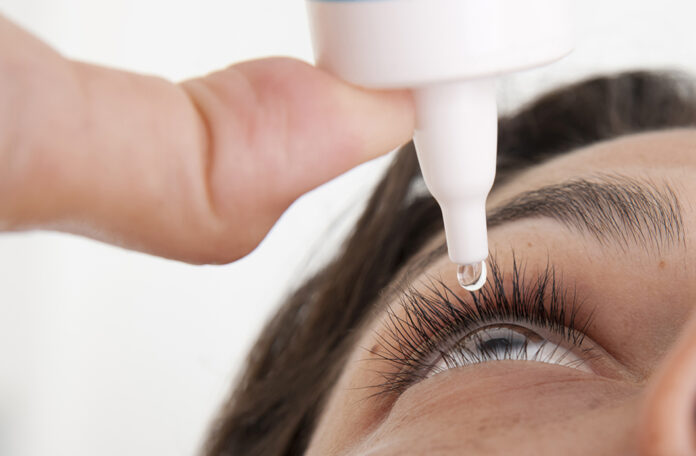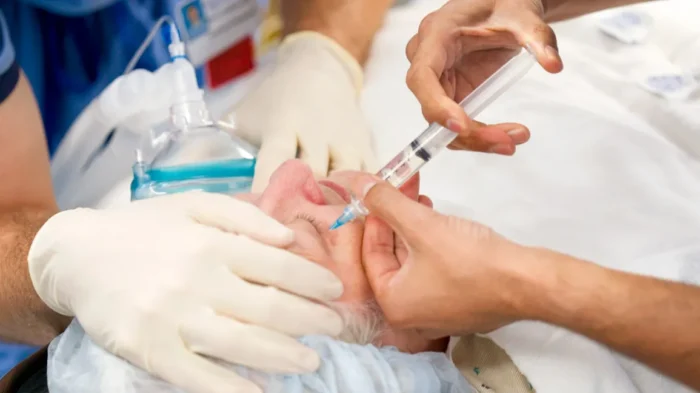
Many diabetics today struggle with a condition known as macular edema. Type 1 and type 2 diabetics remain prone to this condition, which is related to diabetic retinopathy. It is one of several conditions that impact men and women who have lived with diabetes for several years.
The macula makes up a small portion of the retina, and diabetic retinopathy damages this portion. High blood sugar levels damage the blood vessels in the eye, which leads to diabetic retinopathy. These blood vessels leak fluid, causing the macula to swell in the process.
Signs of Diabetic Macular Edema
According to dmeandme.com, this condition leads to blurred or double vision. Eye floaters are often reported by patients suffering from DME, and they state colors appear dull or washed out. Eye floaters and other symptoms affecting vision may also suggest a person has DME and should be reported to the ophthalmologist right away.
Treating Diabetic Macular Edema
Diabetic macular edema treatment focuses on healing the retina. The doctor chooses a treatment based on the type of DME the patient has. The following are some treatment options offered today.
Anti-VEGF Treatments

Individuals with DME produce an excessive amount of VEGF, a protein. As a result, their blood vessels grow rapidly. This weakens the blood vessels, causing them to leak fluid and blood into the macula and retina. To block this protein, the doctor injects the eye with one of four anti-VEGF medications. Current medication options are Aflibercept, Bevacizumab, Faricimab-svoa, and Ranibizumab. Numbing drops are used, so the patient doesn’t feel anything.
Patients receive these shots monthly for six months. After the initial treatment period, shots will be given less frequently. Vision improves when the blood vessels stop leaking.
The choice of shot depends in part on the person’s vision prior to having the treatments. However, some patients don’t respond to these shots. In addition, pregnant women cannot have the shots, as they could harm the developing baby.
Laser Surgery
The doctor may use a laser to perform focal-grid macular surgery. This surgery works to seal blood vessels in the retina. Doing so slows the leaking of the blood vessels to reduce swelling. Doctors treat one eye at a time, and allow the eye to heal before repeating the procedure on the other eye. Most patients only require one treatment per eye to see results. This treatment is often combined with anti-VEGF shots when the shots alone aren’t enough to treat the DME.
Corticosteroids
Corticosteroids work to control inflammation in the body. Eye doctors often recommend these medications to minimize swelling in the retina. The doctor may administer the steroids by injection, or they could insert a tiny implant into the eye. The implant slowly releases the medication, eliminating the need for shots. This implant dissolves over time, so it won’t need removal in the future.
However, steroids aren’t as effective as anti-VEGF shots. In addition, they can lead to the development of glaucoma and cataracts. Doctors won’t try corticosteroids first for these reasons.
NSAID Drops
Patients who undergo eye surgery may be prescribed NSAID eye drops to prevent diabetic macular edema. They work much like steroids do but lack the side effects. The eye drops help prevent and ease swelling.
Managing DME and Slowing Its Progression

Individuals may take several steps to manage diabetic macular edema and slow its progression. These tips help individuals with both mild and advanced DME.
Use Low Vision Aids
Invest in low vision aids, as they make adjusting to the changes in vision easier. With the help of these aids, many people find they can live on their own and continue to enjoy favorite activities, such as reading.
Low vision aids come in many forms. Some people choose to increases the brightness of lighting in the home while other individuals turn to large-print publications. Electronic devices that allow the user to increase the font size are of help, as are magnifying devices.
Occupational Therapy
If low vision interferes with daily activities, speak to the ophthalmologist about vision rehabilitation or occupational therapy. The therapist works with patients to ensure they know how to get the most benefit from low vision aids. They help individuals set up their homes to prevent accidents and injuries. In addition, they work with vision-impaired patients to learn how to solve problems and advocate for themselves.
With the help of vision rehabilitation, a person learns to use their reduced vision to continue with their normal life. Occupational therapy and vision rehabilitation often cover the same tasks. However, the vision rehabilitation team may also work with the patient on developing new skills, such as eccentric viewing. Here, a person uses peripheral vision to see rather than standard vision.
Organizational Tips

Low-vision individuals need to keep items organized, so they know exactly where to find them when needed. An occupational therapist or vision rehabilitation specialist may help with this task.
For instance, people often organize their clothes by color, so they can easily choose matching outfits. An individual with DME often arranges and labels medications to prevent mix-ups and separates important documents and bills into color-coded files. Online accounts greatly help men and women, as they are able to enlarge the font to better see the information.
Slowing the Progression of DME
Every person with diabetic macular edema needs to have yearly comprehensive eye exams. Pregnant women should see an eye doctor soon after they learn of the pregnancy.
Managing blood sugar levels serves as the best way to prevent DME from progressing. In addition, it is important to keep blood pressure and cholesterol at healthy levels.
Follow all recommendations of the medical team regarding the treatment plan. They may suggest dietary changes and increased physical activity. Men and women who smoke need to quit. A certified diabetes educator can be of help in making these changes.
Vision changes lead to stress and challenges in life. Early treatment for diabetic macular edema can slow the progression of the disease and possibly reverse any vision loss. Make an appointment with an eye doctor today, as every person needs to be proactive when it comes to their eye health, particularly those with diabetes.
















